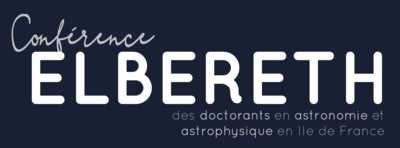Orateur
Description
Long-duration gamma-ray bursts (GRBs) are produced after the death of very massive stars and can be used to trace the formation of stars inside the host galaxy. Thus, their rate might constraint the evolution of star formation throughout the cosmic times, especially at high-redshift where the trend is still under debate. However, previous works on GRB host galaxies at low redshift bring to light a potential bias of these tracers towards low metallicity galaxies and more recently towards dense stellar environments. At high redshift, many questions remain, especially the evolution and the relative importance of these two biases.
We proposed to study the impact of the environment density at high redshift (1 < z < 3) of GRB host galaxies by using a compiled sample of GRBs observed in the IR with the Wide Field Camera 3 of the Hubble Space Telescope (HST). We performed a systematic morphological characterization of each host galaxy by fitting their surface brightness profile with GALFIT. We compared the distribution of the physical and morphological properties of the host galaxies to a sample of typical star-forming galaxies at the same redshift from the 3D-HST survey. Our results suggest that GRB hosts are more compact than field galaxies and have a preference for a higher stellar mass density. The situation seems to evolve at z > 2 where the GRB hosts show no preference for the half-light radius and a lower preference for high stellar density over field galaxies. These results appear to confirm the bias of GRB progenitors for dense stellar environments in addition to a preference for low metallicity. A possible connection between these two factors remains to be explored.
Day constaints
I have constraints (teaching) on Thursday and Friday
| Field | Compact objects (supernovae, black holes, neutron stars) |
|---|

